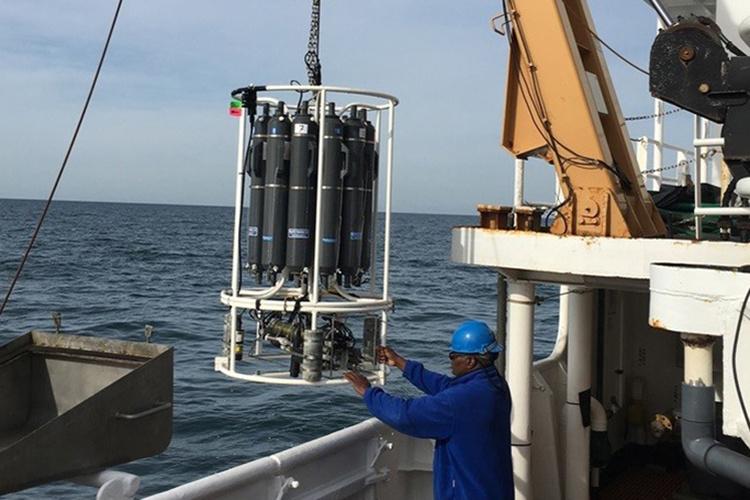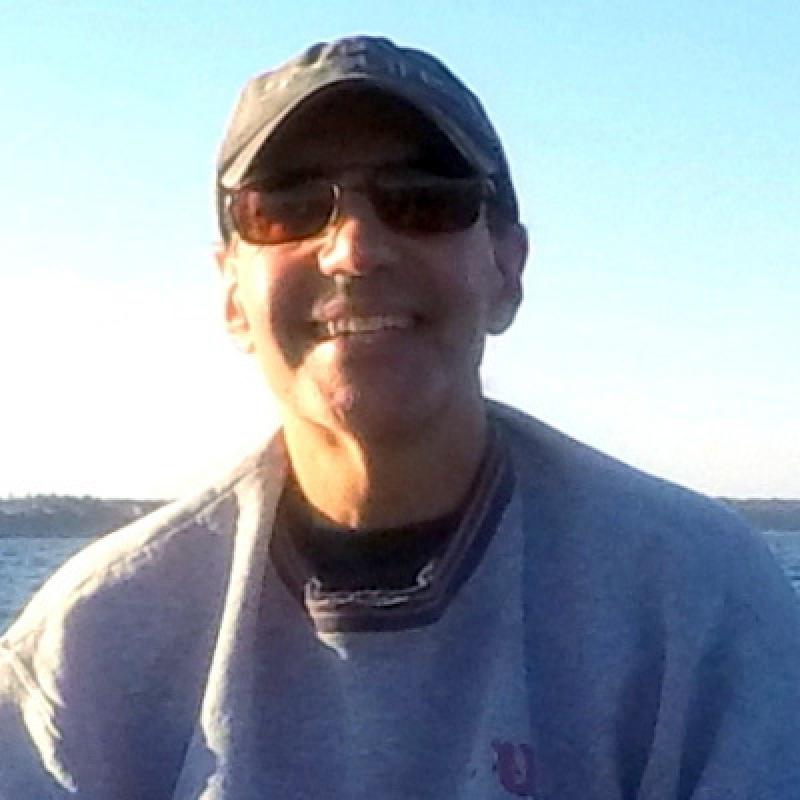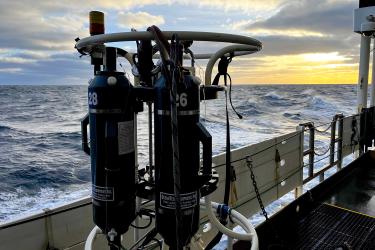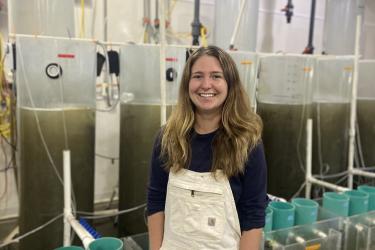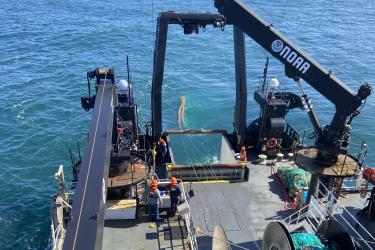One way to sum up the conditions on the fall ecosystem monitoring survey would be say it was plagued by storms punctuated with brief periods of beautiful weather!
Fall is traditionally the worst time of the year for working offshore, and this cruise has certainly lived up to that prediction. Despite that, the NOAA Ship Gordon Gunter has done a remarkable job, eking out a complete survey of the continental shelf waters from Cape Hatteras through southern New England and Georges Bank.
Only the Gulf of Maine has not been covered fully, although now, on the last days of our survey, we are reaching some of the more important stations along its southern boundary, namely the Northeast Channel, Wilkinson Basin, and some inshore western stations off of Boston, prior to returning to our homeport via the Cape Cod Canal. Storm systems continue to pursue us, with the command working out the best arrival time to avoid difficulties in docking on November 1 at Pier 2 at the Newport Naval Station in Rhode Island.

As mentioned in earlier updates, on this cruise we've gone beyond our typical monitoring of oceanographic conditions, zooplankton abundance and distribution, and marine mammal and seabird documentation. Thanks to collaborators from our science center's Milford Lab, the University of Rhode Island, Woods Hole Oceanographic Institution, and the University of Connecticut, new directions now include studies of phytoplankton, seawater optical properties, and analyses of methylmercury and environmental DNA.
Seawater taken from a number of fixed sites on the continental shelf provided researchers onboard with samples that will be analyzed onshore. Despite the fact that several of these scientists have never been offshore, they have done a yeoman's job of patiently filtering many liters of seawater under often very uncomfortable conditions. To paraphrase one of the scientific staff: "Never have so many filtered so much seawater aboard this vessel!"

All of this sampling has been accomplished with the support of the vessel and its crew. The science group would like to extend its thanks and appreciation, first of all, for the vessel itself! The NOAA Ship Gordon Gunter was built as a naval surveillance vessel, but NOAA has done a good job of retrofitting it for oceanographic research.
Making it work is the responsibility of the command and crew, who have cheerfully worked with us to get our gear safely over the side and back, to get us to as many stations as possible, and to make us all feel comfortable and at home even as the weather conspired to do just the opposite.
Thank you all very much! I look forward to being able to sail with you again!
Jerry Prezioso
Chief Scientist
GU1905 Fall Ecosystem Monitoring Survey
